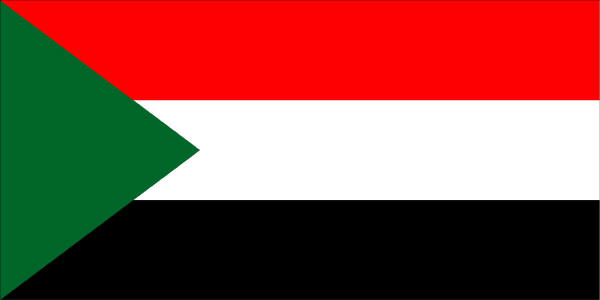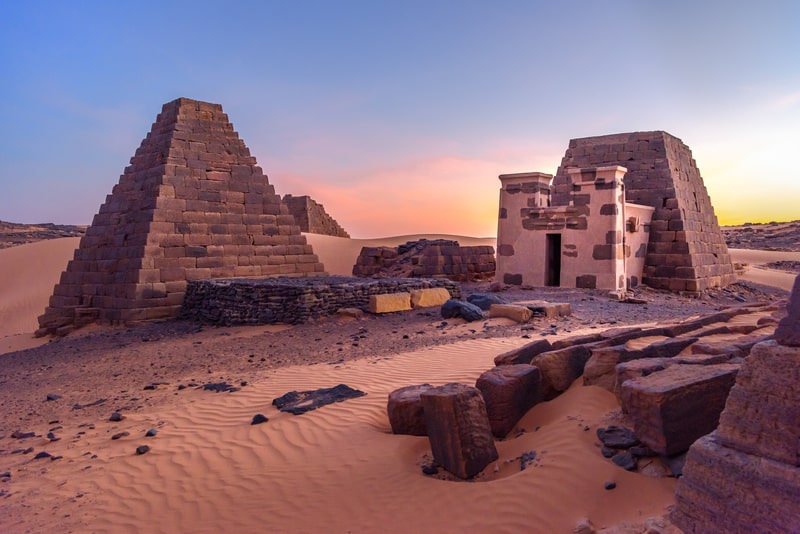Last updated on September 30th, 2022
Sudan, officially the Republic of the Sudan, is a country in Northeast Africa. It has a total area of 1,861,484 square km. Khartoum is its capital and largest city. Arabic and English are its official languages. Sudanese pound (SDG) is its official currency. Its land bordering countries are Egypt, Eritrea, Ethiopia, South Sudan, Central African Republic, Chad and Libya.
Sudan is a member of the United Nations, the African Union, the Arab League, the Organisation of Islamic Cooperation and the Non-Aligned Movement, as well as an observer in the World Trade Organization. The National Assembly regulates the politics of Sudan. And the legal system in the country is based on Islamic law. Let’s learn more about this war-torn country with some interesting facts covering various aspects from history and the present.
Interesting facts about Sudan’s history
1. The official name of Sudan is the Republic of the Sudan (Jumhuriyat as-Sudan).
2. The name “Sudan” translates to “the land of the blacks” in Arabic. It is taken from the Arabic bilād as-sūdān.
3. The independent state of the Republic of Sudan was born on July 9, 2011.
4. Sudan was once the largest and the most geographically diverse state in South Africa. However, it was split into two countries in July 2011. Now, it is the third largest country in Africa (after Algeria and the Democratic Republic of the Congo).
Sudan on the map
5. By 1945, two political parties had emerged in Sudan. One was the National Unionist Party and the other was the Umma Party.
6. On January 1, 1956, Sudan gained independence from Egypt and the UK.
7. The White Nile and the Blue Nile are the two tributaries of the Nile. These two tributaries merge at Khartoum—the capital of Sudan—becoming the Nile River proper before flowing into Egypt. Its other major tributaries are the Bahr el Ghazal, Sobat and Atbarah rivers.
8. The river Nile runs from the north to the south of Sudan.
9. The war in Darfur began in February 2003, causing an estimated death count of 200,000 to 400,000 people, and displacing nearly two million others.
10. Large numbers of refugees also entered Sudan from neighboring countries such as Chad and Ethiopia.
Facts about Sudan for kids
11. January first is the national day in Sudan.
12. South Sudan is the world’s newest nation.
13. Deriba Caldera is the highest point in Sudan at an elevation of 3,042 m, located in Darfur in the western part of Sudan.
14. The Red Sea (also the Erythraean Sea) is the lowest point in Sudan.
15. The metric system is the legal standard, but a highly diverse system based on Egyptian and British standards is in local use for weights and measures.
16. The area occupied by Sudan is slightly more than one-quarter the size of the United States, as per encyclopedia.com.
17. Twelve hundred people dive in the Red Sea in Sudan every year.
18. With 114 native languages and more than 500 accents, Sudan has a diverse multilingual population.
19. As per the CIA, the literacy rate for the total population of Sudan is 60.7% (2018 est.).
20. After the formation of South Sudan, the size of Sudan was reduced by 25%.
21. In 2022, 30.9 % of the population of Sudan uses the internet.
22. Sudan has one doctor for every 10,000 people.
Flag of Sudan

Some important statistics
23. The majority of children die before reaching the age of five.
24. As per nationmaster.com, the employment rate for adults in Sudan is 47.3.
25. As per the 2008 World Refugee Survey, 310,500 refugees and asylum seekers lived in Sudan in 2007.
26. There are more pyramids in one small section of the northern Sudanese desert than there are in the whole of Egypt, according to Slate.com.
27. There are approximately 50,000 deaf people in Sudan.
28. Sudan is a net importer of food.
29. Sudan has a total border length of 6,751 kilometers.

Facts about economy and trade
30. Petroleum is Sudan’s major natural resource.
31. After the separation of South Sudan from the North, an estimated 5-7 billion barrels of oil reserves have been lost to South Sudan.
32. Sudan has 18,630 km² of irrigated land.
33. A significant part of the economy of Sudan is the ox-driven water wheel. The wheel, which was first introduced in Sudan about four centuries before Christ, is still in operation in the country.
34. The country also has significant deposits of chromium ore, copper, iron ore, mica, silver, gold, tungsten, and zinc.
35. Sudan suffers from periodic droughts, desertification, soil erosion, declining wildlife and inadequate supply of potable water.
36. Soil in Sudan can be divided into three categories: the sandy soils of the northern and west central areas, the clay soils of the central region, and the laterite soils of the south.
37. A haboob, a type of an intense dust storm, can occur in Central Sudan (May through July), reducing visibility to zero.
38. The domestic processing of crude petroleum began in late 1964 when the Port Sudan oil refinery went into operation.
39. U.A.E., China, and Canada are the top export partners of Sudan, while China, India and Saudi Arabia are its top import partners.
40. Precious stones and metals represent the largest export items, while industrial machinery is the largest item category imported by Sudan.
Related: Interesting facts about Cameroon
. . . continue reading on the next page
